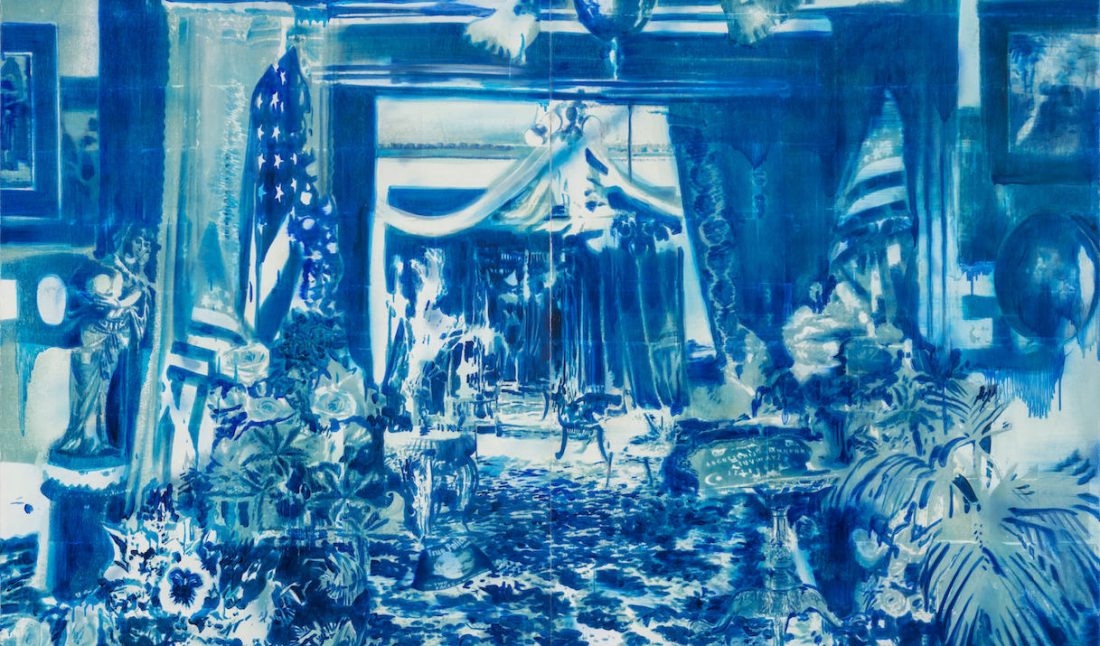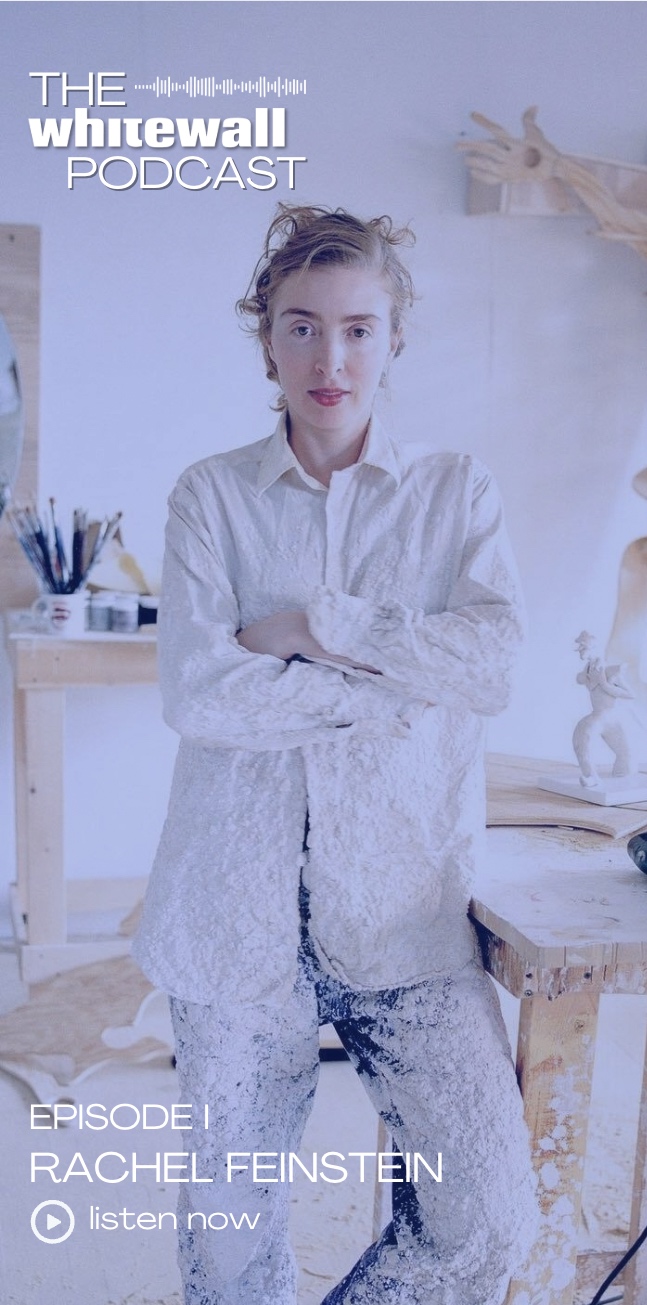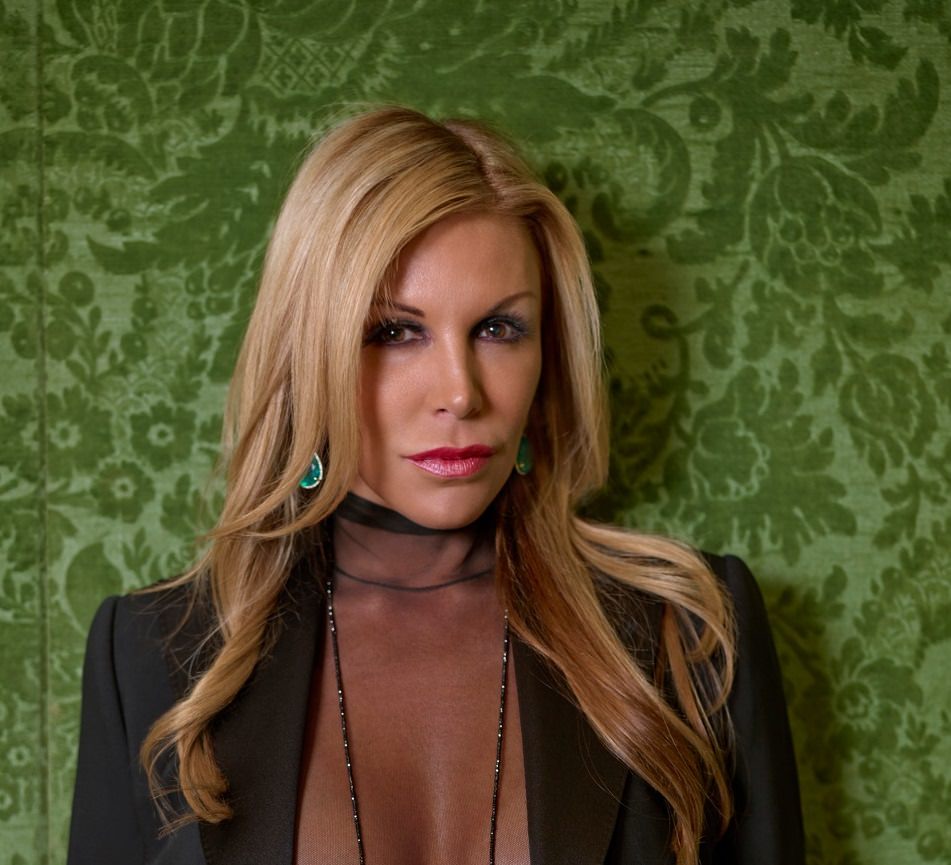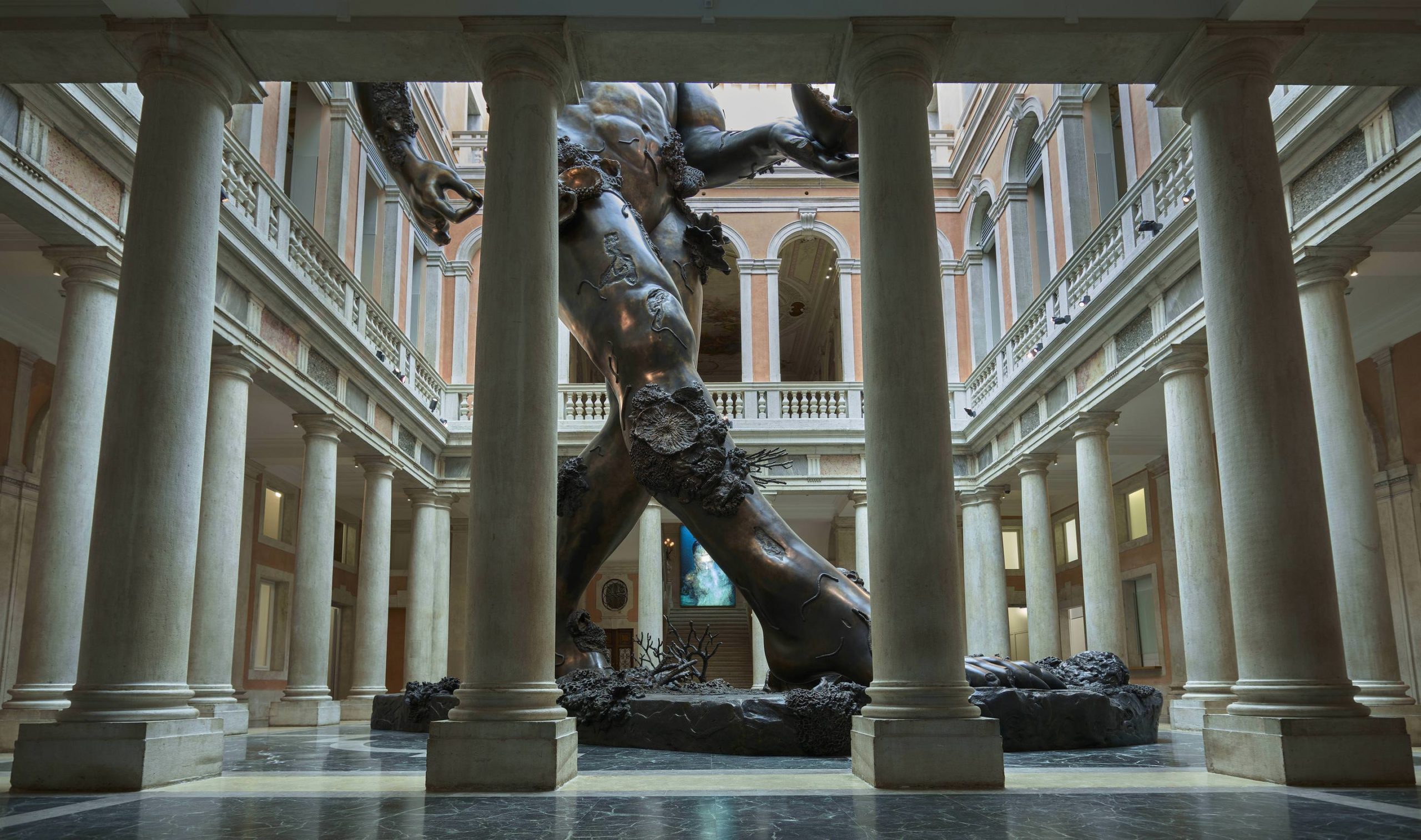Rosson Crow’s recent solo show at Honor Fraser gallery, “Madame Psychosis Holds a Séance,” featured a new medium for the Los Angeles–based artist—film. Crow, having grown up in Texas, has long been somewhat obsessed with the assassination of John F. Kennedy. The film centers around an aging showgirl whose mind has become wrapped up in the national tragedy and who hosts a séance for the late president. Her sense of reality unravels amid sets painted by the artist, props created from a photo-transfer technique, and costumes by Crow’s good friend Jeremy Scott. Madame Psychosis Holds a Séance is saturated in colors—blues, reds, and greens—and feels reminiscent of David Lynch’s Mulholland Drive. While the show was still up late last year, we spoke with the artist about creating paintings dripping with narrative and memory despite an absence of human subject, and what it was like to create her first short film.
WHITEWALL: You’ve said that you’ve always been interested in film and that it’s tied to your previous work. But what set in motion your making your own film?
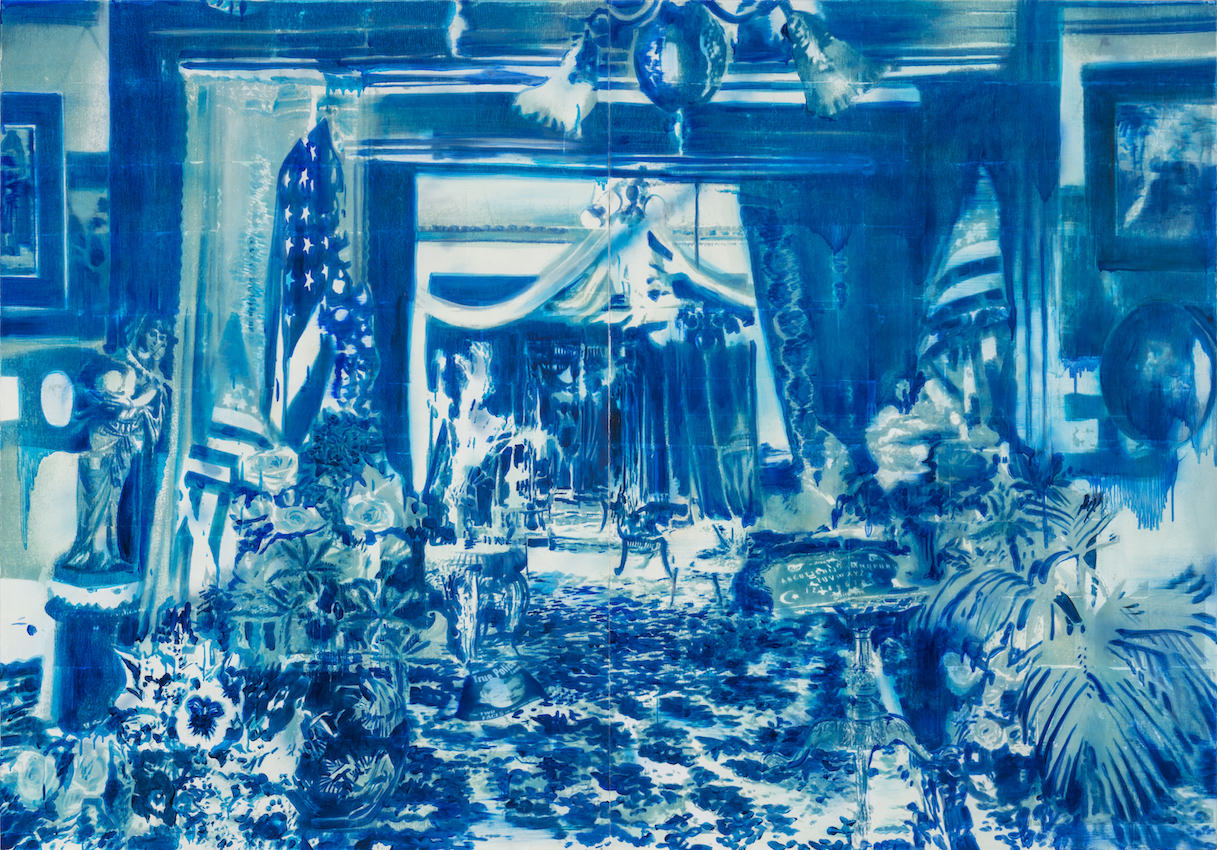 Rosson Crow
Rosson CrowThe Shadow of Your Smile
2015
Courtesy of Honor Fraser Gallery
ROSSON CROW: I’d wanted to do something like this for a long time, but I didn’t know how it was possible to make it all happen because you have to work with a lot of people to make a film happen. I needed help, basically. Things eventually lined up, and I was able to make it happen this year. I had this kernel of an idea that I thought could be interesting and then I was able to develop it more and work with a great writer, and then it just evolved into something bigger.
WW: Did you find, having not made a film before, that there was anything that surprised you? Or did it fit with the way you like to work?
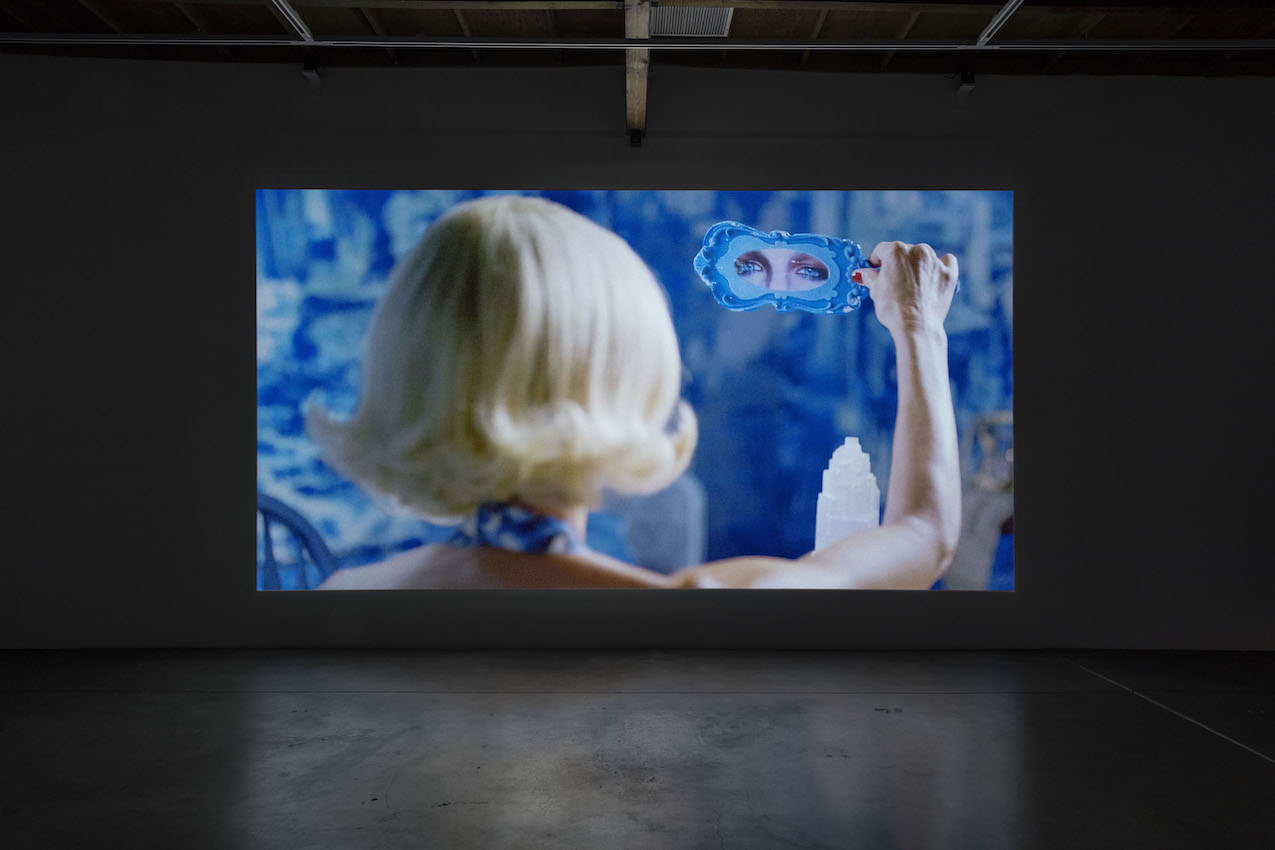 Rosson Crow
Rosson CrowMadame Psychosis Holds a Séance
2015
Courtesy of Honor Fraser
RC: It was a totally new way of working for me, because before starting this project I had never even had a studio assistant. I hired one to help me with this show because I was so overwhelmed by what I had to make and do. Filmmaking is so collaborative, and my whole practice before this was so solitary. That was a totally different way of work, but I loved it and found it to be a really nice change of pace. I can get kind of lonely in the studio [laughs], and it’s nice to be able to work with other people who are artists in their own right and bring their expertise to bring your vision to life. It’s really cool.
WW: You’ve always worked on such a large scale, and you’ve said you see your pieces as comparable to a theatrical set. You want the viewer to be inside the atmosphere of your work. When you then made paintings for an actual set, did that change your approach at all?
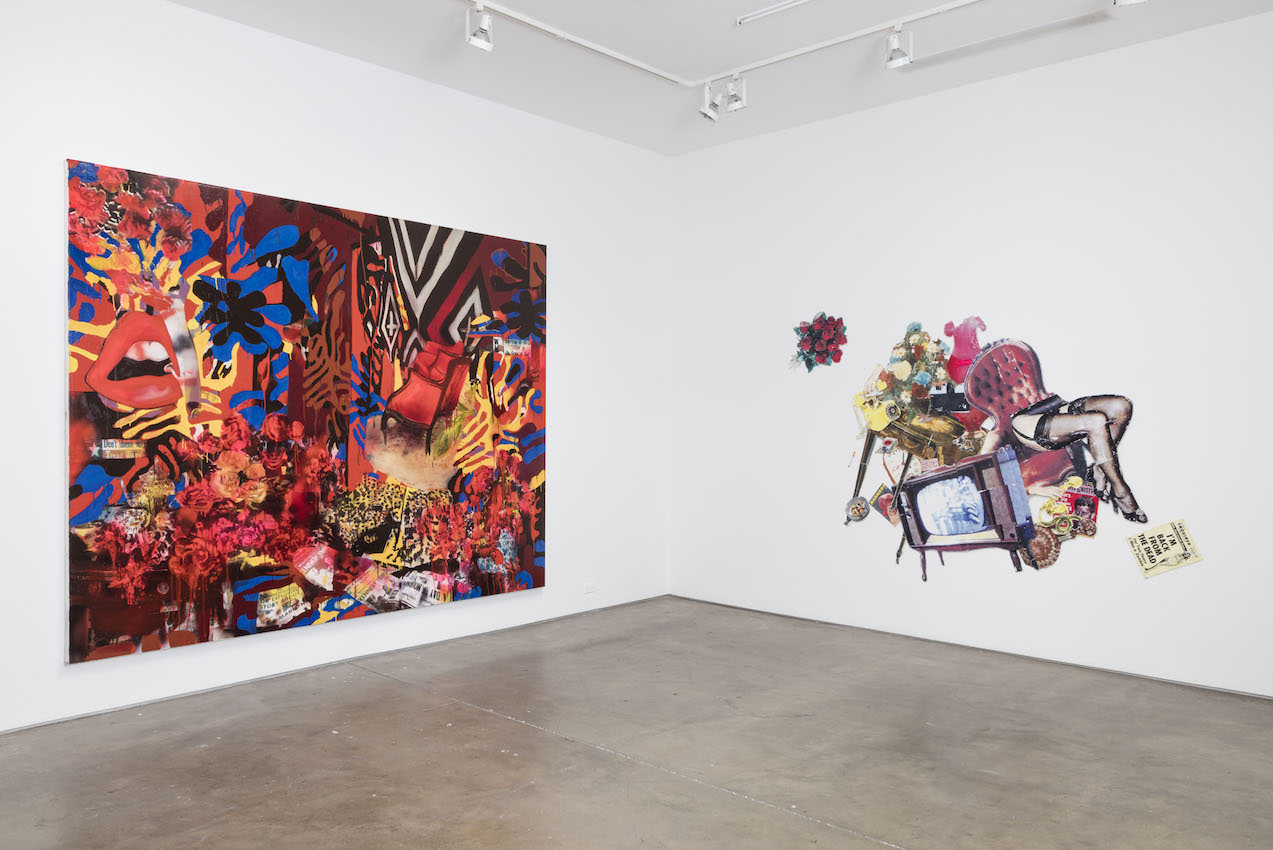 Installation view of “ADAME PSYCHOSIS HOLDS A SÉANCE”
Installation view of “ADAME PSYCHOSIS HOLDS A SÉANCE”Courtesy of Honor Fraser
RC: No, not really. I knew the paintings were going to be these large-scale paintings on the walls of the sets. I feel like the subject matter within them is very influenced by the narrative of the film and what I wanted this character’s environment to be. But they still are very much a painting.
But making all the props, cutouts, and objects—that was totally new for me. Initially, I wasn’t even thinking about them as art objects. I had no idea if we would be showing them or they would exist after the film. But I totally got into making them. It was like little sculptures.
WW: The story of the film revolves around this woman who has wrapped up her identity in the national tragedy of the JFK assassination. Why was that interesting to you?
RC: What was interesting to me about this character was the idea of this woman who wanted to be associated with this kind of tragic event, this big moment in American history, even though it’s unclear if she was there or witnessing it, or had any relationship with Kennedy, or if it’s all fabricated in her mind and made up. But I’m fascinated with the idea of people who will subsume their own identity to take on another one. And that seems like something that women could be more susceptible to, I think.
WW: That issue of gender is something you’ve explored in your painting, too, in terms of depicting gendered interiors or architecture.
RC: I’m more interested in the why, and the psychology of architecture, and what spaces can convey, whether masculine or feminine. I’ve always been interested in gender studies and the ideas of feminist space and architecture, feminine space versus masculine space. It’s interesting, when I made the film I was able to address some of these ideas of femininity, that I could now incorporate into a narrative and tell a different way.
I don’t have any interest in painting the figure. I don’t know why, but I’m really into empty spaces. I think that’s why I found film so liberating in a sense, because I could express all these things differently.
WW: Did your move to Los Angeles in 2006, do you think, plant the seed of making a film?
RC: Everybody who is making movies is here, so I think being out here probably made me want to make a film more. I love going to visit the movie studios and the backlots and go to sets and things like that. I’ve always loved doing that. It permeates the air here.
L.A. has such an interesting history—it’s very new and then they kind of will tear down things all the time. It’s kind of like Las Vegas, but not as bad. It’s this insane fantasy architecture, but I like that about L.A. I’m always on the lookout for new and interesting things here, and I love trying to uncover Los Angeles history in places that still exist.
WW: After finishing a big show like that, what are you working on next?
RC: I always have a little postpartum depression. [Laughs] It really feels like giving birth, and then I’m sad. So I usually do a two- to three-week period where I’m really bummed. I’m kind of a workaholic, so if I’m not working, I can get hard on myself. So I’m just now starting to get back in the studio making some small works, thinking about new things and what I want to do next. I’m just starting that process.
WW: Do you think you’ll do a film again?
RC: I would like to. I definitely want to do more. I don’t know how soon. It was so stressful and so crazy for so many months, and then you forget all about the stress when it’s done. I guess also like kind of having a child. You forget it was hard, and then you’re like, “I want to have another baby!”
This article is published in Whitewall‘s spring 2016 Art Issue.







